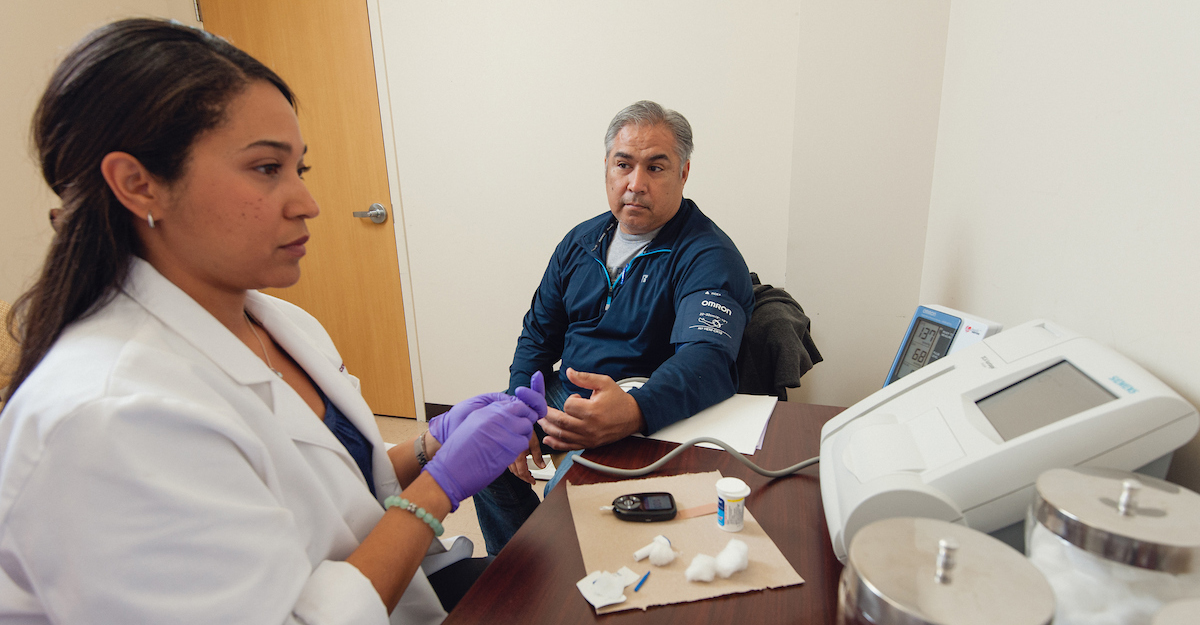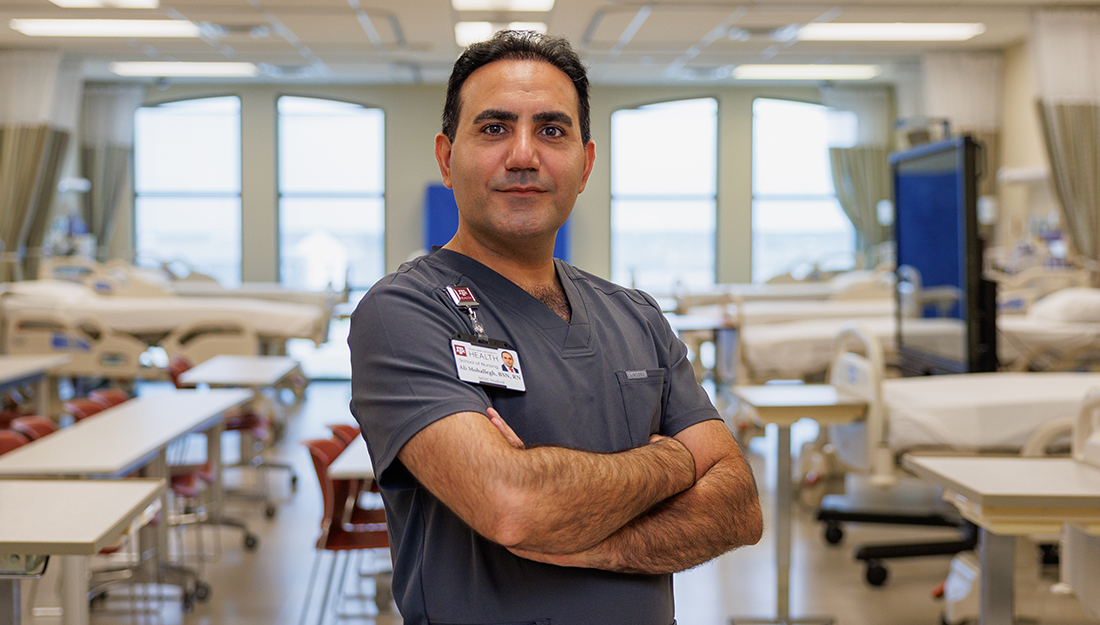The Rio Grande Valley needs more nurses

A nurse in McAllen, Texas, helps a young mother learn how to care for her second-grade son. He was recently diagnosed with type 1 diabetes. The nurse shows her how to check his blood glucose level, give an insulin injection and answers questions about finding the correct insulin-to-carbohydrate ratio and the blood sugar correction factor. It’s a lot for a parent to learn in a short amount of time. But, together, this mom and this nurse are working to create a healthy life for her son. Nurses provide patient care and education like this every day, but the nursing shortage across Texas, and especially in the Rio Grande Valley (RGV), keeps Texans from being as healthy as they could be.
Nursing shortage in the RGV
“The nursing shortage impacts access to care and creates stress and burnout for the working nurses in the RGV,” said Sylvia Vargas, RN, a family nurse practitioner, member of the Texas A&M College of Nursing’s Clinical Advisory Board and native of the RGV. “Although some health care facilities are trying to hire foreign nursing graduates, many vacancies remain because there just aren’t enough nurses to meet the demand.”
According to the Texas Center for Nursing Workforce Studies, the registered nurse (RN) position vacancy rate in Texas was 9.8 percent, and in the RGV, it was 11.6 percent. The full time position vacancy rate for nurse practitioners (NPs) is even higher: the statewide rate for NPs was 16.6 percent, and 32.7 percent in the RGV. This is critical, as nurse practitioners are now filling the many gaps in primary health care services created by a shortage of medical doctors. And, unless there is a strategic shift, the gaps in the supply and demand for nurses is expected to widen.
Addressing the need for more RGV nurses
“Texas A&M College of Nursing is collaborating with Region One Education Service Center (ESC), several high schools, junior colleges and health care systems in the Rio Grande Valley to create a pipeline with multiple entry points for students wanting to pursue a nursing degree or advance their education,” said Debra Matthews, PhD, RN, and associate dean for academic affairs. “The primary goals are to increase the number of nurses, further the education level of practicing nurses and develop a nursing workforce that better reflects the population in the RGV.”
In support of these goals, the ESC was awarded a grant from the U.S. Department of Education to fund a project titled Health Education and Leadership for All (HEAL). A portion of the grant recently funded a group of 75 high school seniors from the RGV to travel to Texas A&M College of Nursing in Bryan-College Station to learn more about the degree options, including various online options.
“Students met with a panel of faculty to ask about the program and possible specialties within nursing, they visited with current students and even had time to work with faculty and students in skills labs and clinical simulations,” said Matthews. “The response was overwhelmingly positive, with several students stating that they were excited about the possibility of coming to Texas A&M for their nursing degrees.”
Recent studies show that patient health outcomes are better when nurses are baccalaureate prepared, and the Institute of Medicine recommends that at least 80 percent of the nursing workforce hold a Bachelor of Science in nursing (BSN) degree by 2020. According to the Texas Board of Nursing, only about 54 percent of practicing registered nurses have their BSNs, and in the Rio Grande Valley, that percentage is even smaller. With a high number of nursing position vacancies, an aging and growing population, a higher incidence of certain infectious and chronic diseases, and the looming retirement of the “baby boomer” nurses (who make up the largest percentage of working nurses), there is an urgent need for more RNs and NPs practicing in South Texas.
“Texas A&M College of Nursing is working to increase the number of BSN and MSN prepared nurses practicing in the Rio Grande Valley,” Matthews said. “Studies have shown that patient outcomes are better when the nursing staff reflects the patient population in terms of diversity.”
Texas A&M’s RN to BSN and MSN-FNP programs are online, which allow practicing nurses to advance their education to the next level while continuing to live and work in their home city. During the 2017 fall semester, there were 16 RGV students enrolled in the RN to BSN program and six RGV students enrolled in the MSN-FNP program. The college is also recruiting RGV students for the traditional BSN program at the Bryan and Round Rock campuses. Regardless of the path students choose, Matthews says that the College of Nursing offers tailored academic support for all who are interested in pursuing a nursing degree, or advancing their education both in-person and online.
“The Rio Grande Valley is a beautiful place with beautiful people, but complex health needs,” Vargas said. “The best candidates to take care of patients in the RGV are nurses who understand and respect the culture, language and customs. Often registered nurses who are native to the RGV will have the necessary cultural competences already, because it is ingrained in their daily lives. We’re also finding that, RGV residents who are able to obtain their nursing degrees while living at home might just stay and practice in South Texas.”
Media contact: media@tamu.edu


